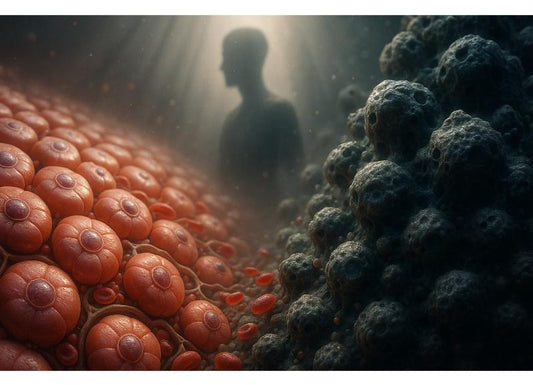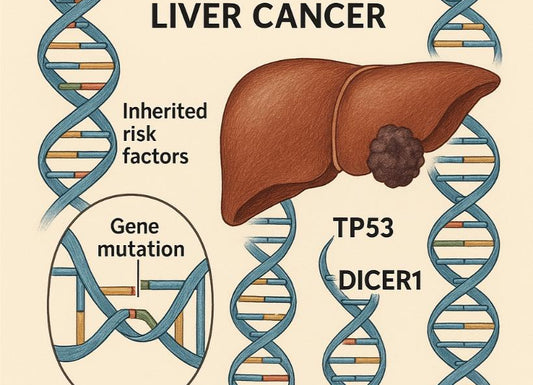How Big Are Kidney Stones? A Guide to Size, Symptoms, and Diagnosis
 Written By
Jaclyn P. Leyson-Azuela, RMT, MD, MPH
Written By
Jaclyn P. Leyson-Azuela, RMT, MD, MPH

Kidney stones are hard mineral deposits that form inside your kidneys and can cause sharp pain as they pass through your urinary tract. Find out how big are kidney stones by understanding how they develop to their sizes. Knowing the process allows you to know when to seek medical help and what treatments are available.
The size of the stone directly affects how painful it is, how likely it is to pass naturally, and whether you’ll need medical treatment. This article explains kidney stone sizes, risks, and how to monitor your kidney health with simple tools like at-home urine tests.
Key Insights
-
Most kidney stones are smaller than 6mm and may pass naturally.
-
Stones over 6mm often require medical treatment to avoid blockage or infection.
-
The ureter is only 3–4mm wide, so stones larger than this can easily get stuck.
-
At-home urine test strips can detect early risk factors like pH imbalance or dehydration.
-
Women often experience more urinary infections linked to struvite stones.
-
Dehydration is the leading cause of stone growth and recurrence.
-
Stones over 10mm almost always need medical removal through lithotripsy or surgery.
-
Early detection and hydration can reduce recurrence by up to 50-60%
What Is the Typical Size Range of Kidney Stones?
Most kidney stones measure from less than 4mm to over 20mm. Stones larger than 6mm usually require medical care. You might hear your doctor describe a kidney stone as small, medium, or large. But what does that really mean?
Understanding the Size Chart
Kidney stones form when minerals and salts in your urine clump together. Their size can range widely. Here’s what the most common measurements look like:
-
<4mm: These are small stones, often compared to a grain of sand, which usually pass naturally
-
4-6mm: Medium-sized stones, which can cause discomfort but may still pass without surgery
-
6-10mm: Large stones that often require medical treatment because the ureter is only about 3-4mm wide
-
10-20mm: Very large stones that almost always require medical removal, sometimes through surgery or shock wave therapy.
What does “big” really mean?
A “big” kidney stone means it’s large enough to block urine flow or cause severe pain. Typically, any stone over 6mm is considered big. Stones over 10mm often can’t pass naturally.
Doctors sometimes compare kidney stones to everyday objects for clarity (e.g., 1mm = tip of a sharp pencil). Visualizing the kidney stones helps you understand why size matters. The pain you feel doesn’t always match the size, but larger stones increase the risk of blockage, infection, and kidney damage.
How stone size affects passing rate
Passing rates drop sharply as stones grow:
-
1-2mm stones: about 85% chance to pass naturally
-
4mm stones: about 60% chance to pass naturally
-
6mm stones: drops to about 20-40% chance to pass naturally
-
10mm or more: almost none passes without help
This is why knowing the stone size helps your doctor decide if you can safely wait or if treatment is necessary.
What Symptoms or Risks Are Linked to Larger Kidney Stones?

Large kidney stones can block urine flow, cause intense pain, and lead to infection. If the stone grows big enough, it can damage your kidney.
Common symptoms by size
Smaller stones might cause mild discomfort, but larger ones trigger serious pain known as renal colic. You may feel any or a combination of the following:
-
Sharp pain in your back, side, or lower abdomen
-
Pain spreading to the groin or genitals
-
Nausea and vomiting
-
Blood in your urine
-
Burning sensation during urination
-
Frequent urge to urinate but producing little urine
Pain intensity doesn’t always match stone size, but larger stones tend to stay stuck longer, causing more damage.
What causes kidney stones to grow larger?
Kidney stones grow if:
-
You drink too little water (dehydration)
-
You eat a high-salt or high-protein diet
-
You have medical conditions like hyperparathyroidism or gout
-
You have a family history of kidney stones
-
Your urine stayed concentrated for long periods
As the stone remains inside the kidney, minerals keep attaching to it, increasing its size.
Risks of larger stones
Big stones can cause more pain because they can cause complete blockage of urine flow. This could lead to:
-
Infection when bacteria multiplies in trapped urine
-
Hydronephrosis, which is the result of long-term blockage and can result in kidney damage
-
Sepsis happens when the severe infection spreads to the bloodstream and it is a life-threatening condition
If you have fever, chills, or trouble passing urine, you need immediate medical help.
Are women affected differently by kidney stone size?
Yes, research shows that women may experience kidney stones differently. While men are slightly more likely to form stones, women report higher pain levels and a greater chance of urinary tract infections. Hormonal changes, pregnancy, and urinary tract shape can affect how stones move or cause symptoms.
Women also tend to be associated with struvite stones, because these form as a result of infection. This type of stone grows quickly and becomes very large in short periods of time.
How Are Kidney Stones Measured and Diagnosed?
Doctors often measure kidney stones using imaging tests (e.g., CT scans, ultrasound, or x-rays). At-home urine test kits can help identify the risk of stone formation before you even feel pain.
How doctors find and measure stones
If your symptoms suggest kidney stones, your doctor might order:
-
CT (computed tomography) scan has the most accurate way to measure stone size and location
-
Ultrasound is common for pregnant women or those avoiding radiation
-
X-ray (KUB) checks for visible stones but may miss small or soft ones
Your urine might also be tested for crystals, blood, or infection signs. The imaging result helps determine whether the stone can pass or needs removal.

Can at-home urine test kits help?
Yes, at-home urine test strips can detect pH levels, calcium, and other factors linked to kidney stone risk. These are smart tools to use when you’ve had stones before or have symptoms like cloudy urine or burning.
You can use these simple tools to:
-
Track hydration levels
-
Check for high calcium or uric acid
-
Spot changes that increase stone risk
-
Share results with your healthcare provider
These tests don’t replace imaging but provide early insight. If your readings show abnormal results, you can contact your doctor before symptoms worsen.
What lab tests confirm stone composition?
When a stone passes or is removed, your doctor may send it for analysis. The most common types include:
-
Calcium oxalate stones are the most frequent type, linked to diet and dehydration
-
Uric acid stones are related to gout or high-protein diets
-
Struvite stones are linked to urinary tract infection and are often large
-
Cystine stones are rare and caused by a genetic condition
Knowing the type helps prevent new stones by adjusting diet, fluids, and medications.
When Should You Seek Medical Help for Kidney Stones?
If you experience severe pain, vomiting, fever, or trouble urinating, you need medical attention right away. Kidney stones can become dangerous when they block urine or cause infection.
Warning signs to call your doctor
Call your healthcare provider if you have:
-
Pain lasting more than a few hours
-
Blood in your urine
-
Fever or chills
-
Trouble keeping fluids down
-
No urine output for several hours
A doctor may order imaging to find the stone’s size and decide if removal is needed.
When a kidney stone is an emergency
If you have fever, chills, or back pain with nausea, go to the emergency room. These signs may point to infection or complete blockage, which can quickly damage your kidney.
How long does it take to pass a stone?
Passing time depends on size and location:
-
1-4mm stones (days to weeks)
-
5-6mm stones (up to a month or more)
-
7mm or more (often requires medical or surgical treatment)
Hydration helps move stones faster, but larger stones often get stuck near the bladder or ureter opening.
Treatments for larger stones
If the stone doesn’t pass, doctors may recommend the following:
-
Shock Wave Lithotripsy (SWL), which breaks stones using sound waves
-
Ureteroscopy (URS) is a procedure when a small scope removes or breaks the stone
-
Percutaneous nephrolithotomy (PCNL) is a surgical procedure for very large stones (more than 2cm)
Each of these methods are employed depending on the stone’s size, hardness, or position.

Can You Monitor or Manage Kidney Stones at Home?
Yes, small stones can be managed at home, but larger stones require medical care. Home monitoring helps prevent recurrence and detect early warning signs.
When home management is safe
You can usually manage stones under 4mm at home if you have no fever or vomiting. Doctors often suggest:
-
Drinking plenty of water (at least 2.5–3 liters a day)
-
Using over-the-counter pain medicine like ibuprofen or acetaminophen
-
Straining urine to catch the stone for lab analysis
-
Using a heating pad to reduce pain
If symptoms worsen or you develop fever, stop home care and call your doctor.
Role of hydration
Hydration is critical for preventing stone growth and new formations. Water helps flush minerals and dilute urine. Aim for pale-yellow urine, a sign you’re well-hydrated.
Fluids that help:
-
Water with lemon (contains citrate that reduces calcium buildup)
-
Low-sugar citrus drinks
-
Herbal teas (avoid sugary sodas or energy drinks)
How at-home urine test strips fit into daily care
Urine test strips are practical tools for checking your kidney health. They measure pH, specific gravity, and minerals like calcium or uric acid. These markers can reveal if your urine is too acidic or concentrated.
Use them weekly or biweekly can:
-
Detect early warning signs of stone formation
-
Help track how diet changes affect your urine
-
Offer peace of mind between doctor visits
They’re especially useful for people with recurrent kidney stones or those advised to follow a low-oxalate or low-sodium diet.
Post-removal care at home
After surgery or treatment, your doctor may ask you to:
-
Drink more water to prevent new stones
-
Use urine strips to monitor for blood or infection signs
-
Follow a low-salt, low-oxalate diet
-
Take prescribed medications such as potassium citrate or thiazide diuretics
Regular checkups and home testing can reduce your risk of future stones by up to 50%.
Preventing Kidney Stones and Keeping Track of Your Health
You can lower your kidney stone risk by adjusting what you eat, staying hydrated, and checking your urine at home.
Simple daily steps
-
Adequate hydration. Drink 10-12 cups of water each day but this still depends on the level of your activity
-
Eat less salt and processed foods
-
Limit red meat and high-oxalate foods like spinach, nuts and chocolate
-
Maintain a healthy weight
-
Test your urine regularly if you have a history of stones
Using diet to prevent recurrence
Food choices play a big role in stone formation.
-
Calcium stones: eat calcium-rich foods (not supplements) with meals to bind oxalate in your gut
-
Uric acid stones: reduce meat, fish, and shellfish
-
Struvite stones: prevent urinary infections with prompt antibiotic treatment
-
Cystine stones: drink plenty of water to dilute cystine concentration
When to consider home urine tests long-term
If you’ve had stones before, at-home urine test kits are smart preventive tools. They show changes in urine chemistry long before stones form. They can reveal pH shifts, dehydration, or high calcium, helping you act early with diet or medication.
Related Sources
Understanding A Staghorn Kidney Stone: A Complete Guide to Symptoms, Treatment, and Prevention
Exploring the 4 Methods for Kidney Stone Removal: Benefits and Risks
Quick Summary Box
-
Kidney stone sizes range from under 4mm to over 20mm.
-
Small stones (<4mm) often pass naturally with proper hydration.
-
Medium stones (4–6mm) may cause pain but can still pass in some cases.
-
Large stones (>6mm) usually need treatment like shock wave therapy or surgery.
-
Common symptoms include back pain, nausea, blood in urine, and trouble urinating.
-
Seek medical help if pain is severe, urine is blocked, or you have fever or vomiting.
-
At-home urine test kits help monitor hydration and mineral balance to prevent new stones.
-
Prevention focuses on hydration, balanced diet, and regular health monitoring.
References
Better Health Channel. (2022). Kidney stones. Vic.gov.au. https://www.betterhealth.vic.gov.au/health/conditionsandtreatments/kidney-stones
Brisbane, W., Bailey, M., & Sorensen, M. (2016). An overview of kidney stone imaging techniques. Nature Reviews Urology, 13(11), 654–662. https://doi.org/10.1038/nrurol.2016.154
Gillams, K., Juliebø-Jones, P., Juliebø, S. Ø., & Somani, B. K. (2021). Gender Differences in Kidney Stone Disease (KSD): Findings from a Systematic Review. Current Urology Reports, 22(10), 50. https://doi.org/10.1007/s11934-021-01066-6
Han, H., Segal, A. M., Seifter, J. L., & Dwyer, J. T. (2015). Nutritional Management of Kidney Stones (Nephrolithiasis). Clinical Nutrition Research, 4(3), 137. https://doi.org/10.7762/cnr.2015.4.3.137
NHS. (2018, October 3). Kidney stones - Causes. Nhs.uk. https://www.nhs.uk/conditions/kidney-stones/causes/
PDQ Adult Treatment Editorial Board. (2005, September 23). [Figure, Millimeters (mm). A sharp pencil...]. Nih.gov; National Cancer Institute (US). https://www.ncbi.nlm.nih.gov/books/NBK65885/figure/CDR0000419665__186/
Pristyn Care. (2025). Pristyncare.com. https://www.pristyncare.com/treatment/kidney-stone/size-charts/
Reimer, R. P., Salem, J., Merkt, M., Sonnabend, K., Lennartz, S., Zopfs, D., Heidenreich, A., Maintz, D., Haneder, S., & Große Hokamp, N. (2020). Size and volume of kidney stones in computed tomography: Influence of acquisition techniques and image reconstruction parameters. European Journal of Radiology, 132, 109267. https://doi.org/10.1016/j.ejrad.2020.109267

Jaclyn P. Leyson-Azuela, RMT, MD, MPH, is a licensed General Practitioner and Public Health Expert. She currently serves as a physician in private practice, combining clinical care with her passion for preventive health and community wellness.



